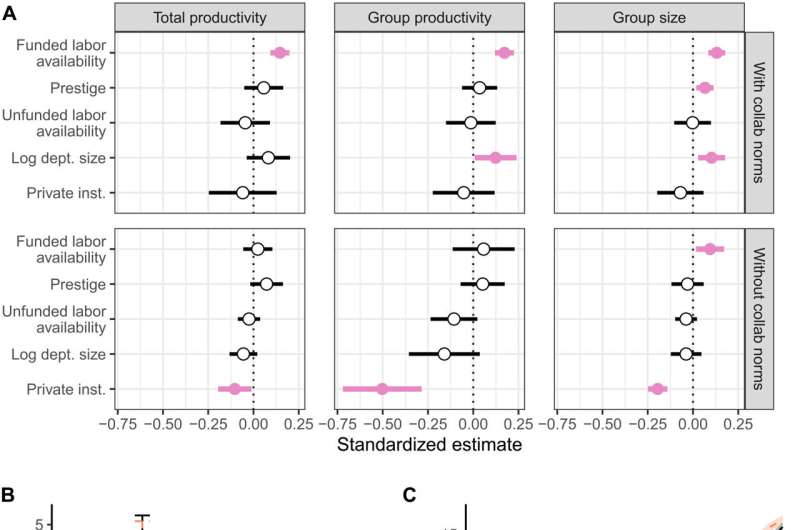November 26, 2022 report
Study shows prestigious institutions produce more published manuscripts because they have a bigger labor pool

A quartet of researchers at the University of Colorado, Boulder, has found that the reason more prestigious universities are able to publish more scientific papers than lesser institutions is that they have a larger pool of undergrads, fellows and postdocs to assist with such efforts.
In their paper, published in the journal Science Advances, Sam Zhang, Hunter Wapman, Daniel Larremore and Aaron Clauset describe analyzing massive amounts of data in the Web of Science database to learn more about publishing by institutions in the U.S.
Most of the prestigious science paper publishing institutions in the U.S. are college- or university-based. Some of the most well known are MIT, Harvard, Stanford and the University of California. Researchers at these institutions conduct a lot of science research and publish a corresponding number of science-research based papers in peer-reviewed journals.
In this new effort, the research group sought to better understand the factors underlying the tendency of prestigious institutions to produce more published manuscripts than other, less-prestigious institutions.
The work involved sifting data from the Web of Science database, which is actually a portal to several other databases, all of which contain massive amounts of data related to science research efforts. In their effort, the researchers included data from 1.6 million published articles, written by 78,802 authors, all of whom were either tenured or on a tenure track.
The data involved research efforts at 26 U.S. universities that grant Ph.Ds. The researchers focused on data describing productivity of both the authors involved in research efforts and publishing groups as a whole.
The researchers found a pattern—more prestigious schools tend to produce more papers because they have more people available to work on research teams. They noted that neither the senior- nor junior-level people working on the papers were more productive than others working at less-prestigious institutions; it was just more people working and getting more done.
The researchers suggest the possibility that less-prestigious institutions could increase their publication rates if they chose to increase the number of qualified people available to work on research and publishing efforts.
More information: Sam Zhang et al, Labor advantages drive the greater productivity of faculty at elite universities, Science Advances (2022). DOI: 10.1126/sciadv.abq7056
Journal information: Science Advances
© 2022 Science X Network





















